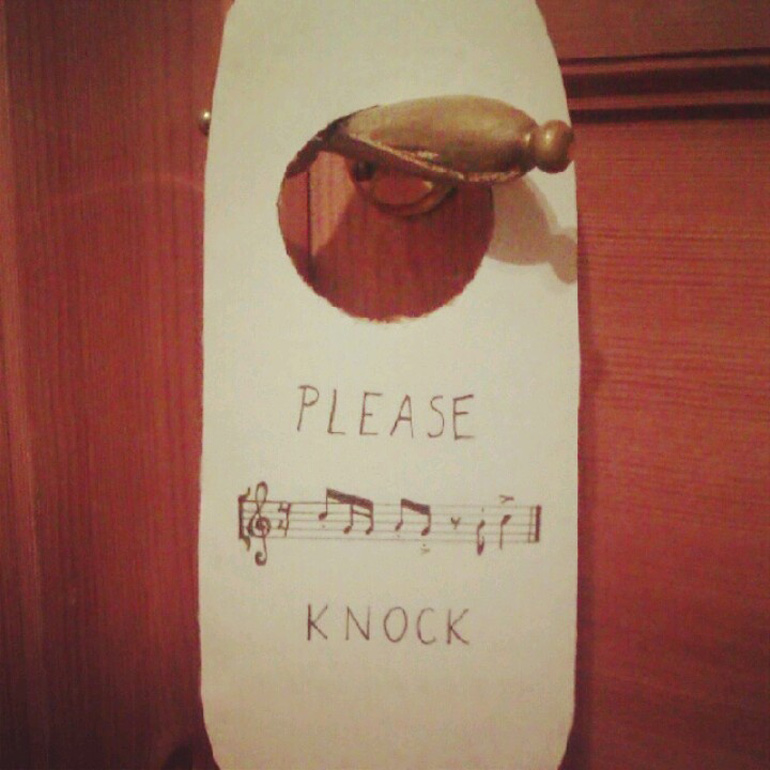
Anyone who has ever stood in front of a door has probably performed the door knocking song at least once in their lives. The strange thing about it is, we all seem to know how it goes – like it was somehow part of our collective musical DNA – at least in North America anyways.
Have you ever wondered where it comes from?
You know the one:
dut, dut-dut dut, dut… dut, dut.
After a bit of research, it turns out it originated from a song written in 1899 by Charles Hale called, “At a Darktown Cakewalk”.
You can hear it played here on an old Stella 17-Inch Music Box here:
Did you catch the rhythm? It came to be called, “Shave and a haircut, two bits,” and was most often used at the end of a piece of music for comic effect.
Over the past hundred years, it has become one of the most recognizable rhythms in North America. It’s been used on car horns, Morse code “dah-di-di-dah-di, di-dit” ( –··–· ··) and even at the end of communications by ham radio operators to sign out.
It’s also inspired composers such as Leonard Bernstein (“Gee, Officer Krupke” from the West Side Story [see video below starting at 4’11”]), P. D. Q. Bach “Blaues Gras” (“bluegrass”) aria, as well as countless others.
As a fitting conclusion, we leave you with a compilation of clips from Vancouver-based music journalist Nardwuar The Human Serviette, who famously ends his interviews by inviting guests to sing, “Doot Doola Doot Doo… Doot Doo!”
[Warning: the video contains profanity and may not be suitable for everyone.]
#LUDWIGVAN
Want more updates on Toronto-centric classical music news and review before anyone else finds out? Get our exclusive newsletter here and follow us on Twitter for all the latest.
- THE SCOOP | Royal Conservatory’s Dr. Peter Simon Awarded The Order Of Ontario - January 2, 2024
- THE SCOOP | Order of Canada Appointees Announced, Including Big Names From The Arts - December 29, 2023
- Ludwig Van Is Being Acquired By ZoomerMedia - June 12, 2023